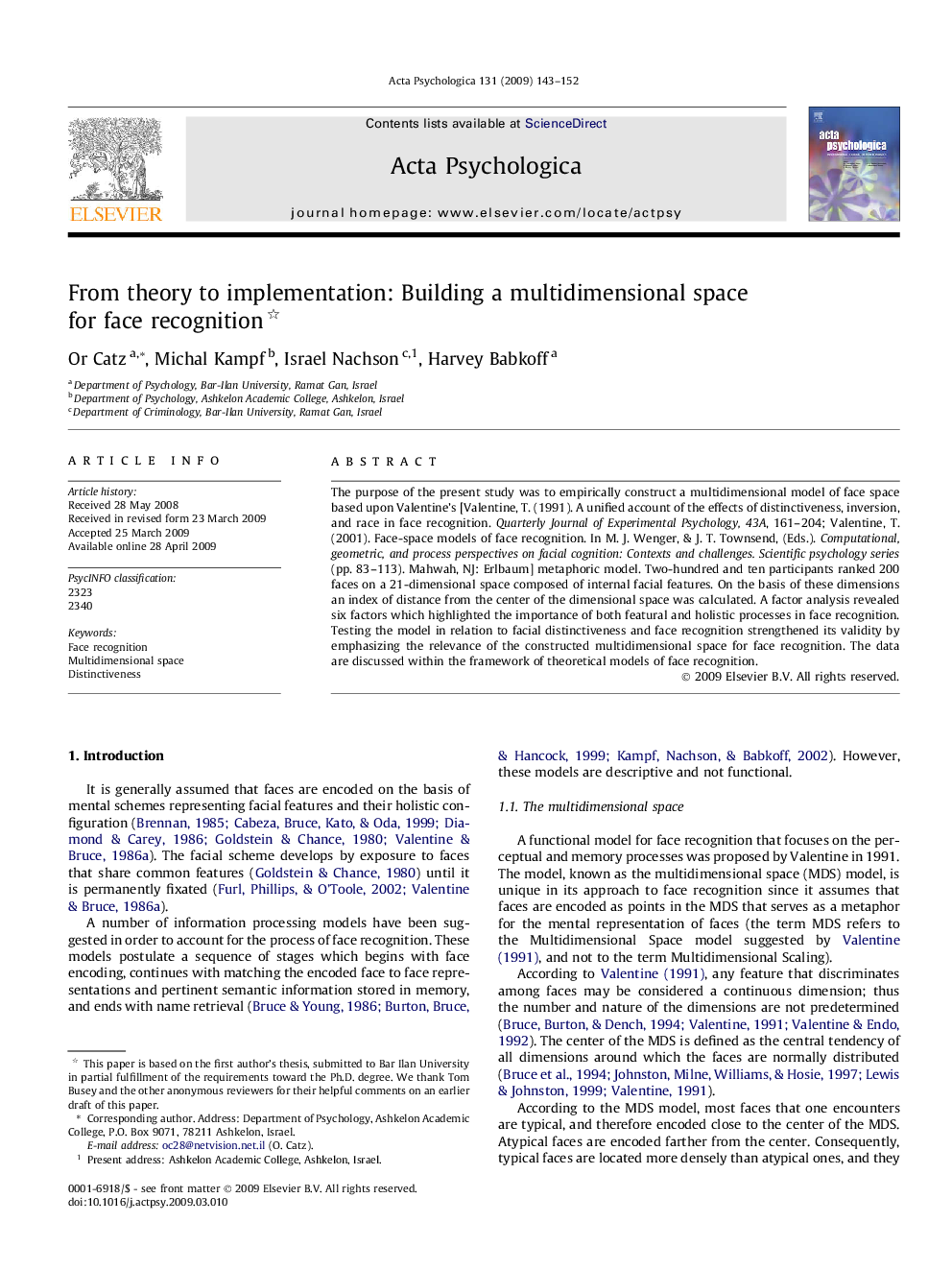| Article ID | Journal | Published Year | Pages | File Type |
|---|---|---|---|---|
| 920365 | Acta Psychologica | 2009 | 10 Pages |
The purpose of the present study was to empirically construct a multidimensional model of face space based upon Valentine’s [Valentine, T. (1991). A unified account of the effects of distinctiveness, inversion, and race in face recognition. Quarterly Journal of Experimental Psychology, 43A, 161–204; Valentine, T. (2001). Face-space models of face recognition. In M. J. Wenger, & J. T. Townsend, (Eds.). Computational, geometric, and process perspectives on facial cognition: Contexts and challenges. Scientific psychology series (pp. 83–113). Mahwah, NJ: Erlbaum] metaphoric model. Two-hundred and ten participants ranked 200 faces on a 21-dimensional space composed of internal facial features. On the basis of these dimensions an index of distance from the center of the dimensional space was calculated. A factor analysis revealed six factors which highlighted the importance of both featural and holistic processes in face recognition. Testing the model in relation to facial distinctiveness and face recognition strengthened its validity by emphasizing the relevance of the constructed multidimensional space for face recognition. The data are discussed within the framework of theoretical models of face recognition.
